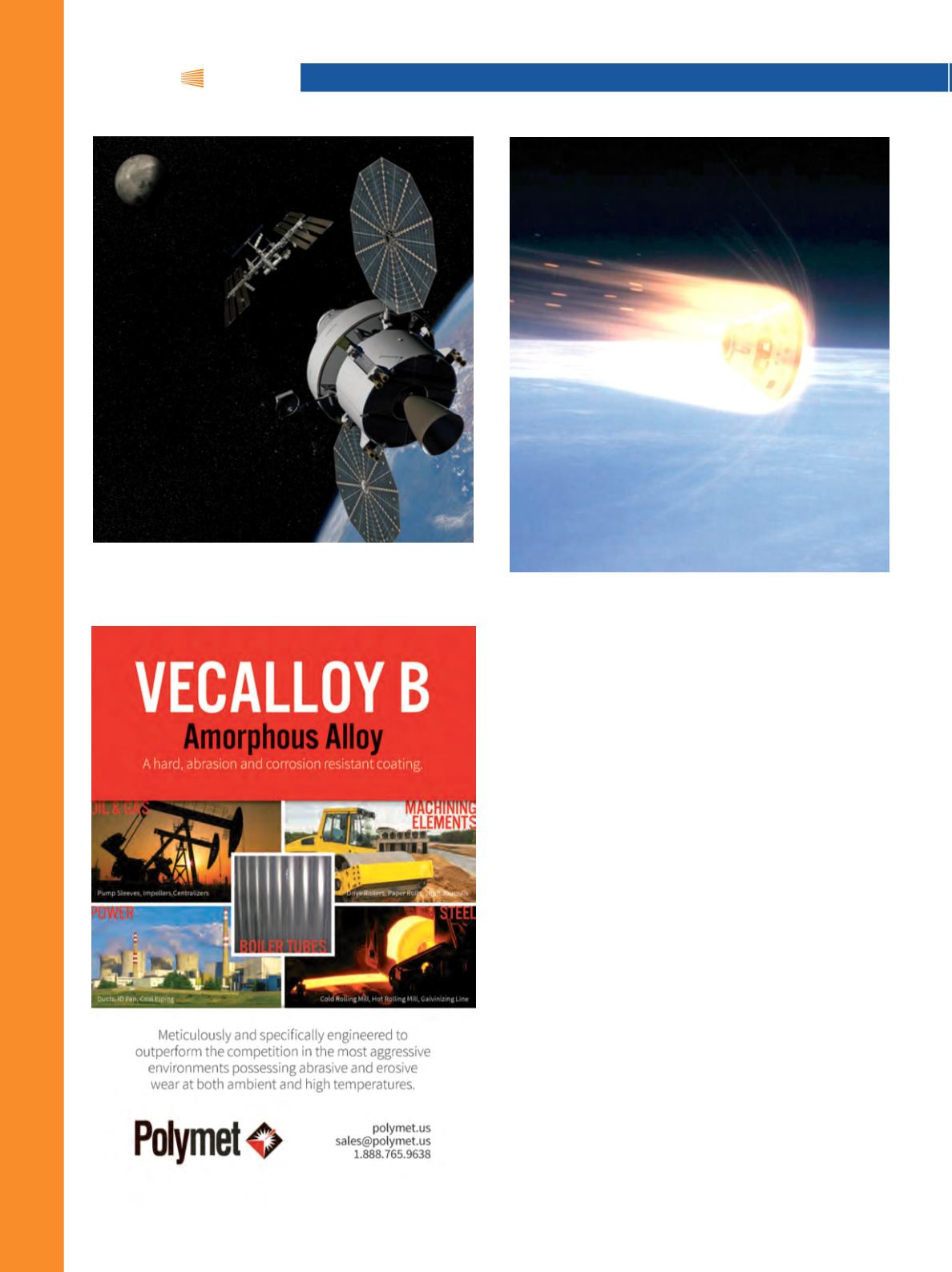

above the Earth’s surface. This generated a re-entry velocity
exceeding 20,000 mph. For extra strength and stiffness, the
heat shield features a titanium backbone structure enabling
Orion to withstand landing loads of 300,000-400,000 lb. The
December flight tested all of Orion’s re-entry systems—in-
cluding testing the heat shield, jettisoning the forward bay
cover, and deploying parachutes—and gauged the effective-
ness of the software driving numerous functions across mul-
tiple systems.
Data collected from Exploration Flight Test-1 provides
engineers with information about fluctuations between the
temperatures and pressures across the heat shield during
re-entry, Avcoat performance, and accelerations and strain
during splashdown.
Even with deployment of 11 parachutes to help slow the
spacecraft to a safe splashdown, the heat shield must protect
the crew and capsule from landing loads and turbulent sea
conditions, which could vary significantly during different mis-
sions. Comprehensive test flight data, including information
about the heat shield, will guide design decisions most critical
to crew safety, ultimately lowering risks and costs for future
space missions.
For more information:
Allison Rakes is Orion public
relations officer, Lockheed Martin Space Systems Co., 6801
Rockledge Dr., Bethesda, MD 20817-1803, 303.977.7135,
allison.m.rakes@lmco.com,
lockheedmartin.com.
Fig. 3
—The OrionMulti-Purpose CrewVehicle is intended to carry
a crew of up to four astronauts to destinations at or beyond low
Earth orbit.
Fig. 4
— During re-entry into Earth’s atmosphere, the Orion heat
shieldprotected the vehicle fromexternal temperatures of 4000°F.
i T S S e
| a d v a n c e d m a t e r i a l s & p r o c e s s e s | F E B R U A R Y 2 0 1 5
1 2
iTSSe
|
TSS


















